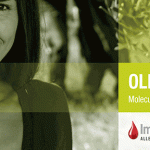New Levels of Allergy Management: Egg Components
Products are for professional/laboratory use only.
An allergy diagnosis is based on the history, clinical symptoms and physical examination of the patient in combination with results of sIgE tests.
ImmunoCAP® Molecular Allergology takes the diagnosis and management of allergy to a whole new level. The technology uses single allergen components to quantitatively detect IgE antibodies. A single blood sample enables measurement to all available ImmunoCAP components, providing precise results for better risk assessment. ImmunoCAP Allergen Components help differentiate “true” allergies from symptoms due to cross-reactivity, evaluate the risk of severe reactions and help in defining the optimal specific immunotherapy treatment. Benefits that ultimately can improve the patient’s quality of life.
Egg allergy is one of the most common food allergies in children, starting as early as during their first year of life. The prognosis is generally good, and in most cases (60-70%) the allergy resolves by school age. There is a strong association between egg allergy and eczema, but also other skin symptoms and asthma are common. Anaphylaxis, although rare, may occur in some cases.
IgE antibodies to egg have been shown to have predictive value for atopic disease later in life, why it is important to follow these children closely also after the egg allergy has resolved. Although the frequency of sensitization to egg among children may be as high as 9%, clinical egg allergy is less common, affecting approximately 1-2 % of young children. This discrepancy between sensitization frequency and actual disease prevalence of egg allergy, reflects tolerance development which may be followed by analysing IgE levels to egg components.
Egg contains four main allergen components. Ovomucoid is the most important of these egg white allergens for clinical egg allergy. This component is called Gal d 1 based on the Latin name for hen, Gallus domesticus. The three other components are Ovalbumin, Ovotransferrin or Conalbumin and Lysozyme, denoted Gal d 2, Gal d 3 and Gal d 4 respectively. Although Ovomucoid comprises only about one tenth of the total egg white protein, it is both highly allergenic and very stable to heat and digestion.
Egg allergic patients sensitised to Ovomucoid most likely do not tolerate any form of egg, which is explained by the high stability of Ovomucoid. However, patients lacking IgE antibodies to Ovomucoid, but sensitised to the other, more labile egg components (e.g. ovalbumin) may tolerate cooked eggs.
Thus, measuring IgE levels to Ovomucoid can help to make a more precise diagnosis of egg allergy.







